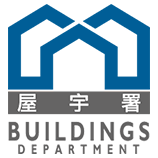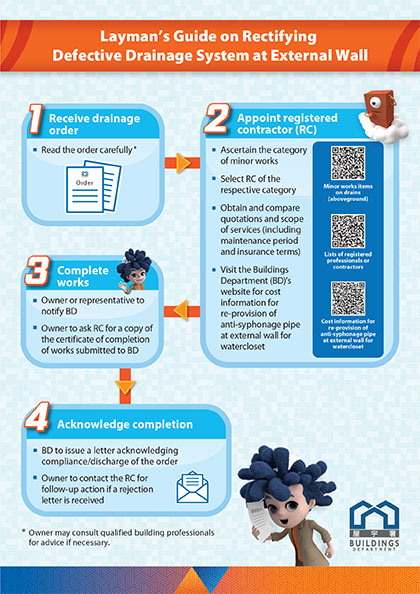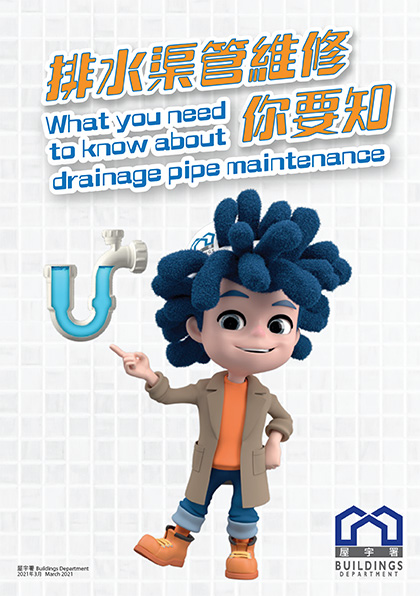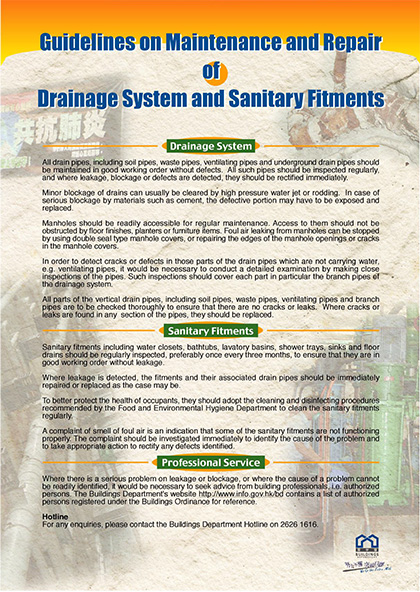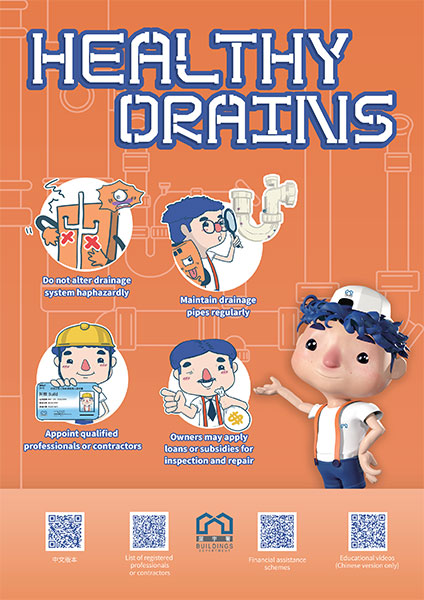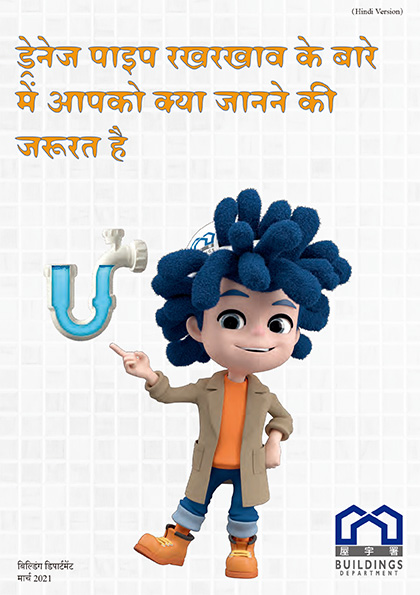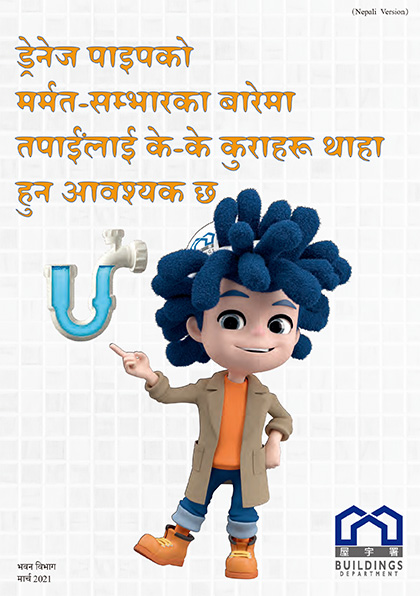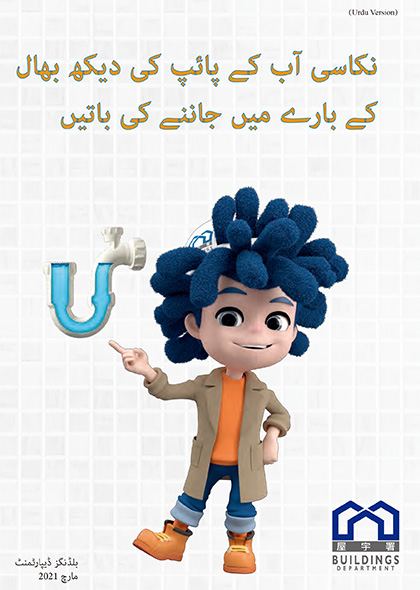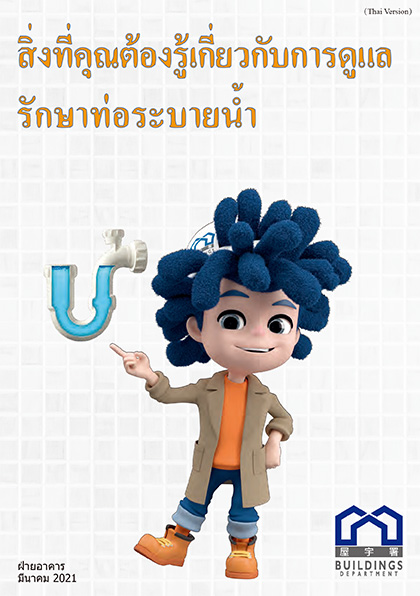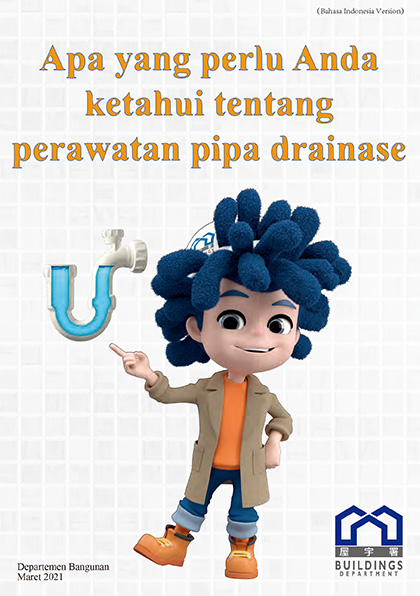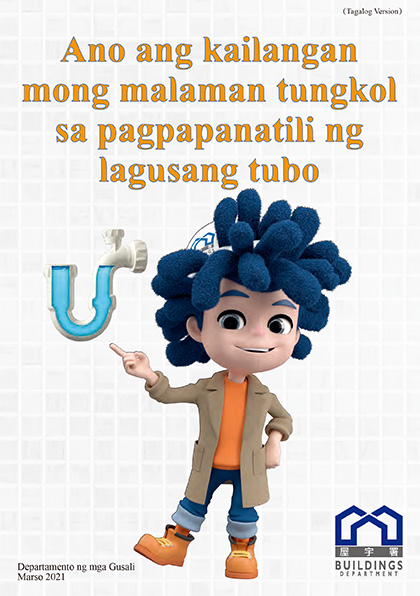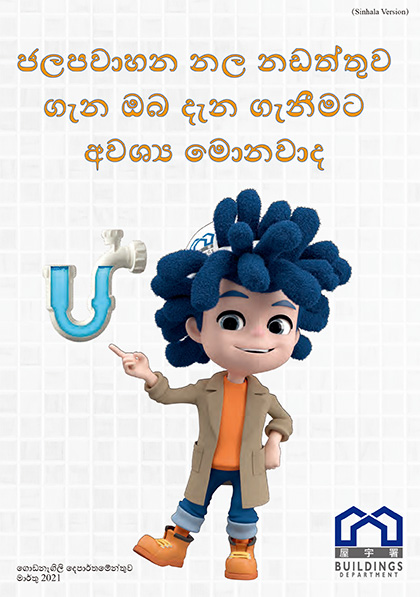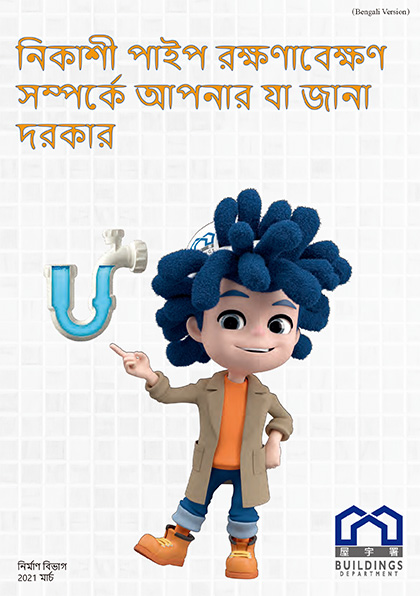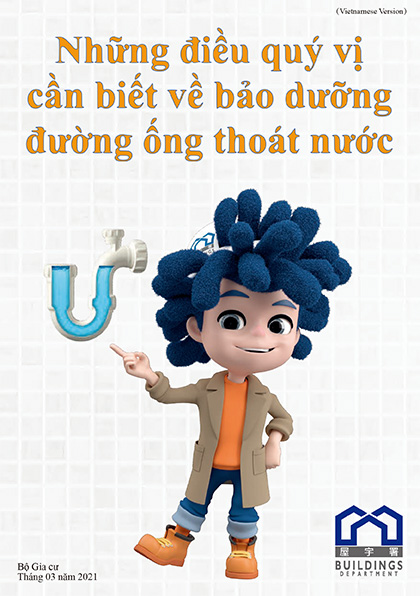Do not illegally alter the drainage system
Buildings Department (BD) reminds building owners not to carry out illegal alteration works to the drainage system in their premises. They include illegal addition to drain pipes due to alteration to the layout of the kitchen or bathroom, or removal of anti-syphonage pipes in the water closet or bottle traps with anti-syphonage air valves in the wash basin. The design and construction of the drainage system are subject to control under the Buildings Ordinance (BO). It should be noted that facilities including the water closet, bathtub/shower tray, floor drain, wash-up sink or wash basin must be fitted with an effective water seal (such as a trap with anti-syphonage provision) to prevent foul odour in drain pipes from drifting into the premises. Waste water produced in our daily lives, such as those from the wash basin or bathtub, can be discharged directly into a hopper head in an external wall. The fitting of anti-syphonage devices is not required. However, this drainage arrangement is not applicable to sewage from the water closet.
Common renovation works involving repair or replacement of internal branch pipes or sanitary fitments (such as water closets, wash basins or bathtubs) are exempted building works. The carrying out of these works is not subject to the Minor Works Control System (MWCS). However, suitable contractors registered under the BO should be appointed in accordance with the MWCS for repairing external pipes or internal main pipes.
Think before modifying the drainage system
Building owners who wish to erect, alter or remove the drainage system (including the anti-syphonage pipes) in their premises may so pursue in accordance with the simplified requirements under the Minor Works Control System by appointing suitable contractors registered under the Buildings Ordinance so as to ensure that the drainage system in their premises are in compliance with the provisions of the Buildings Ordinance and the relevant regulations. These include every sanitary fitment (such as the water closet, wash basin and bathtub) should be provided with an effective water seal (such as a trap with anti-syphonage provision). Such requirements are also applicable to the erection or alteration to drain pipes involved in sub-divided flats.
Appoint registered contractors to carry out the drainage works
The contractors registered under the Buildings Ordinance for such kind of works shall satisfy the requirements of the Buildings Department (BD) on qualification, competency and experience. Any person other than a qualified registered contractor or a person acting under the supervision of a qualified registered contractor, who, without reasonable excuse, certifies or carries out minor works shall be guilty of an offence. Furthermore, BD has reminded registered contractors the requirements on drainage works in the Technical Guidelines on Minor Works Control System. The registered contractors shall comply with the relevant statutory and safety requirements when carrying out, supervising the works and certifying completion of works. They shall also submit the certificate of completion of works and relevant information to BD.
How to search/verify building professional and registered contractors
- The list of building professional only involves Authorized Person indicating their interest in providing services in the maintenance and repair of buildings and drainage to this department.
Audit check on Minor Works
To ensure the quality of works, the Buildings Department (BD) will randomly select completed minor works for checking, which includes checking of submitted documents and site audit as necessary. The audit check system is risk-based, focusing on minor works items that are more complicated and involving a higher level of risk. BD will increase site audit on minor works involving alteration of drainage systems in building units in order to enhance the monitoring of such kind of minor works.
If contravention of the provisions of the Buildings Ordinance is found during the audit check, BD will take enforcement action including requiring the concerned persons to rectify and instigating prosecution and disciplinary actions against the concerned persons as necessary.
Functions of traps and anti-syphonage pipes/anti-syphonage air valves
Traps and anti-syphonage pipes/anti-syphonage air valves play an important role in the drainage system. When a trap is filled with water, water seal is formed and prevents foul odour in drain pipes from entering the premises. Furthermore, an anti-syphonage pipe/anti-syphonage air valve connected to a trap is to balance air pressure. When the volume of sewage discharged from the upper flat reaches a certain level, the siphonage effect will occur, creating a negative air pressure in the branch pipes in the lower flat which is able to suck out the water seal in the trap of the sanitary fitment. An anti-syphonage pipe, which must be unsealed and extended to more than 1 metre above the roof, allows air to move towards the connected branch pipe and balance the differential air pressure brought by the siphonage effect. It thus prevents loss of the water seal in the trap and ensure the proper functioning of the trap. The function of the anti-syphonage air valve is the same as that of the anti-syphonage pipe. Illegal alteration to a trap or an anti-syphonage pipe/anti-syphonage air valve may suck out the water seal in the trap, causing the emission of drain pipe stenches into the premises.
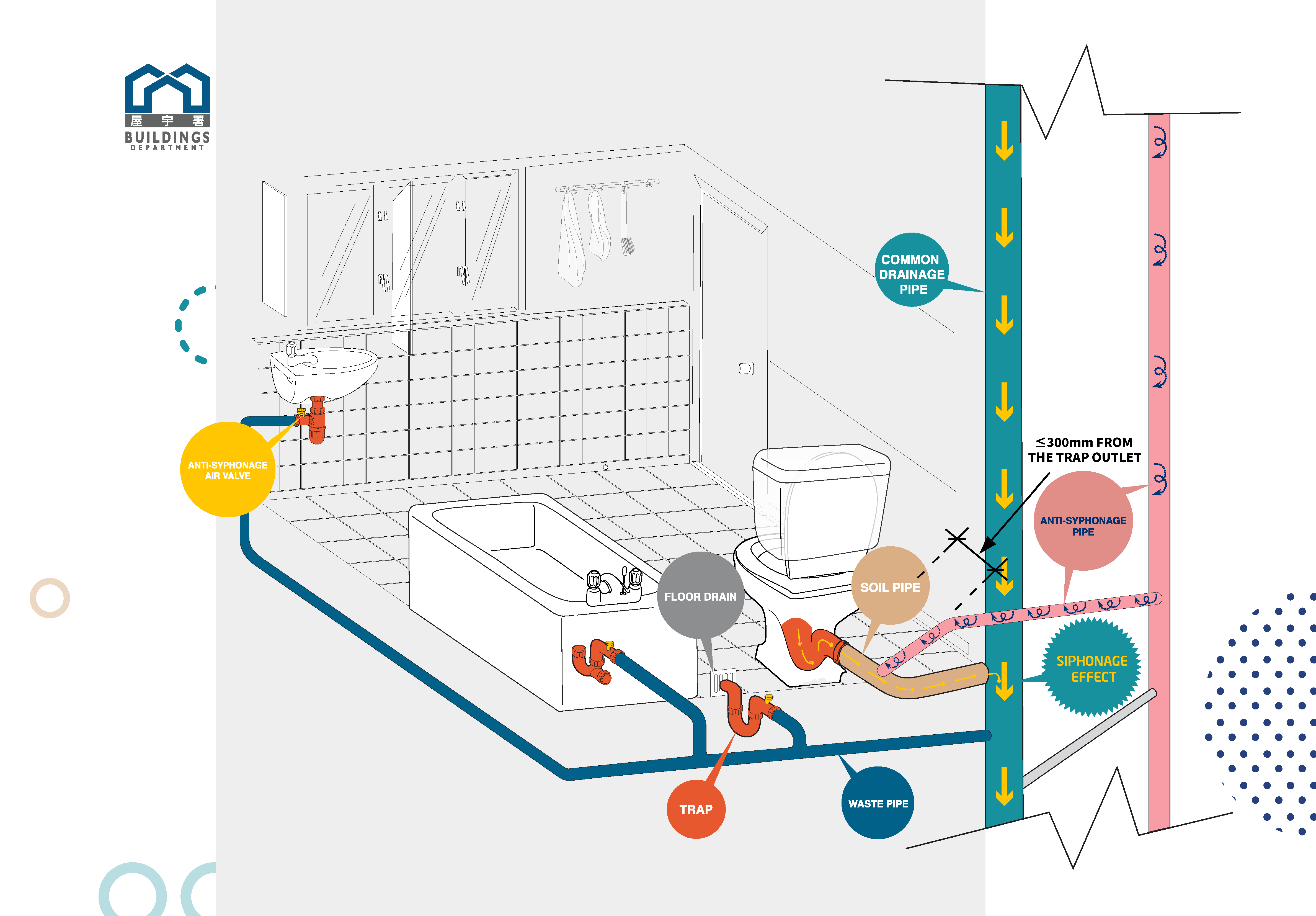
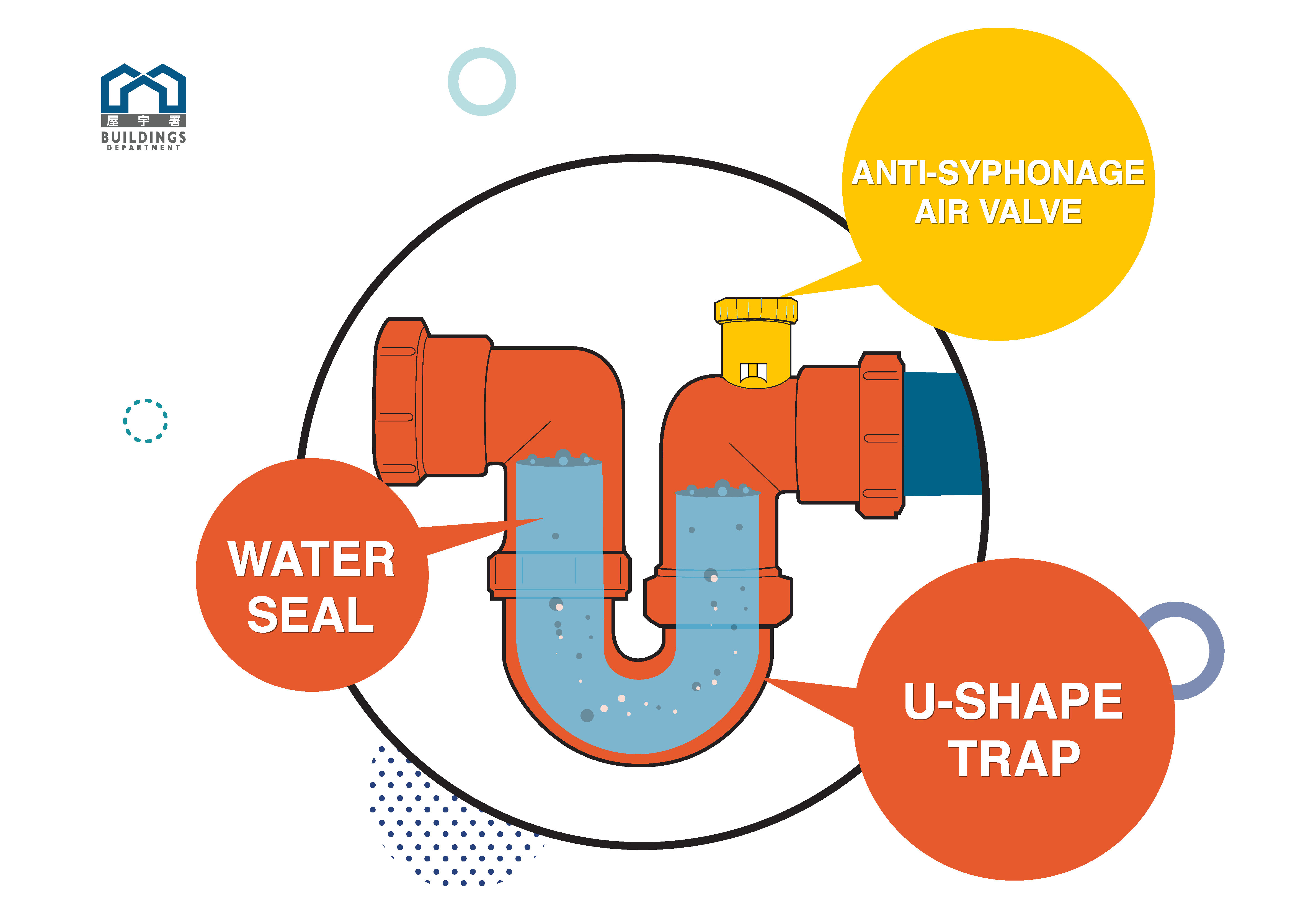
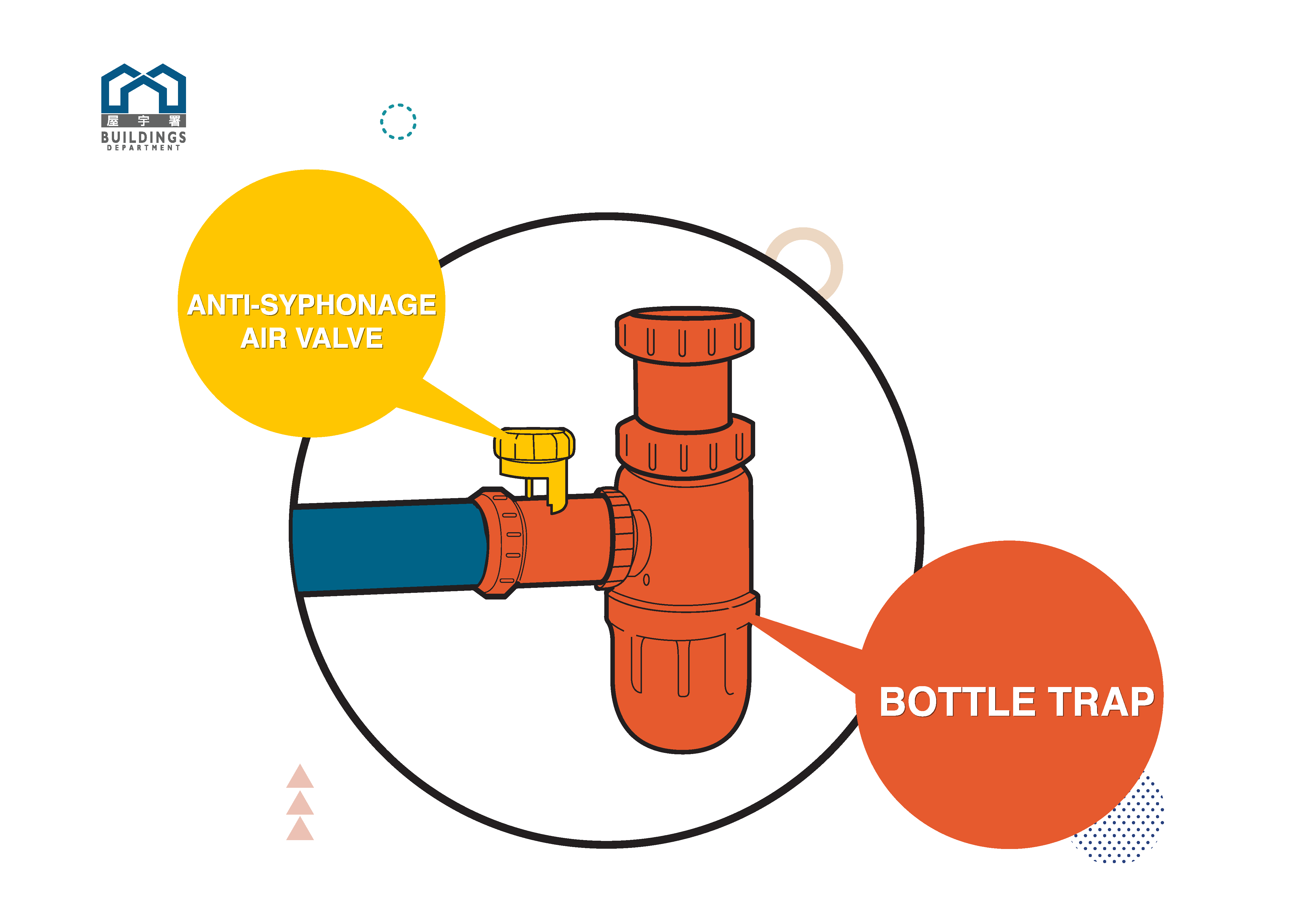
Pay attention to floor drains
The water closet, wash basin and bathtub are frequently used in daily life so dried traps are not usually found. However, the situation of the floor drain is totally different. If the drain has not been used for a long time or occupants forget to pour water into the drain regularly, the water seal in the trap will evaporate gradually and lose its capability for preventing foul odour from entering the premises. Therefore, the Buildings Department reminds occupants to pour about half a litre of water into each floor drain at home at least once a week to ensure the water seal in the trap functions properly.
What if irregularities found in drainage systems
If occupants suspect irregularities in the drainage system of their premises, such as odour from the drainage outlet or anti-syphonage pipe, seepage or cracks at the drainage pipes, they should arrange qualified building professionals and contractors to conduct inspection and repair as soon as possible. Buildings Department (BD) has formulated a set of guidelines reminding the public on the proper maintenance and repair of drainage pipes including traps, which is available on the department's webpage:
BD will continue its work on stepping up public education and publicity to enhance public's understanding about the drainage system and its proper repair and maintenance.
Cost Information for Re-provision of Anti-syphonage Pipe at external wall for Water Closet
Other information
Financial assistance to Owners/Owners' Corporations
Press release
Useful links
Epidemic Prevention Related Information
Press release
Circular letter/Notice
- Qualified Supervision for Precast Concrete Construction, Modular Integrated Construction and Heat Soak Process of Tempered Glass
- Special work arrangement of New Buildings Divisions of Buildings Department in 2020
